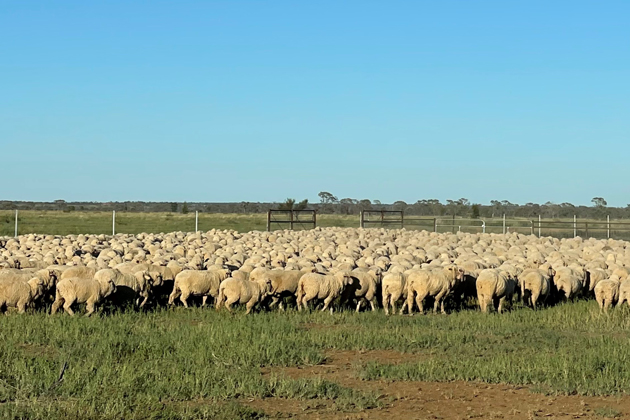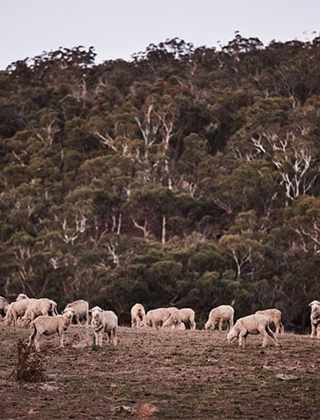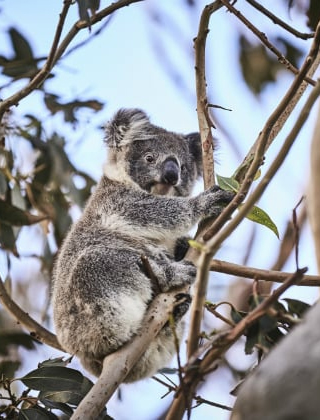Exclusion fencing aids productivity & nature

New research has demonstrated the positive environmental impacts that exclusion fencing has on rangeland sheep grazing properties due to producers’ ability to better manage total grazing pressure and access to land.
Wool production has a long history in Australia’s southern rangelands. However, in recent decades, increasing predation on sheep and lambs by invasive species such as wild dogs, foxes and feral pigs badly affected weaning rates. Kangaroos and feral goats have also added to total grazing pressure, which has been a major issue affecting agricultural productivity and biodiversity. In some rangeland areas, pastoralists have been reluctant to rest paddocks from grazing livestock because of concerns that uncontrolled grazing by kangaroos would consume the regenerating pasture.
As a result of the predation on livestock and the impact of herbivores such as kangaroos on grazing capacity, the viability of many wool-growing enterprises was severely compromised. Many woolgrowers left the industry.
However, many of those that stayed in the sheep and wool industry have erected exclusion fences to control and better manage predators and total grazing pressure. The rapid transition to adopt exclusion fences has led to a significant area of land now managed behind these fences, which has proved to be pivotal for the region’s wool industry.
The fencing has allowed woolgrowers to greatly improve their productivity and remain in the industry, while at the same time improve their farms’ environmental health and resilience. It has also allowed other producers to reintroduce sheep on properties in former sheep districts (that had largely shifted to grazing cattle) and rejoin the wool industry.
Exclusion fencing benefits documented
A recently completed project funded by AWI developed nine detailed case studies of the impacts of exclusion fencing on rangeland sheep grazing properties in Queensland and New South Wales over a five-year period.
AWI Project Manager, Reproduction & Nutrition, Emmah Goldsmith, says the case studies document in detail the positive impacts of exclusion fencing that enable sheep producers to control total grazing pressure and access to pasture, as well as predation on sheep and lambs.
“The impact of exclusion fencing in the rangelands was described by several producers in the project as being a ‘game changer’ allowing their businesses to continue to prosper into the future. For many, fencing was seen as a necessity for them to continue wool-growing,” Emmah said.
“Prior to exclusion fencing, many producers indicated their business viability was under significant threat due to a combination of predation, inability to control total grazing pressure and poor seasonal conditions. After fencing, with the ability to control total grazing pressure, capacity to maintain higher levels of feed across the farm and at the same time achieve higher production levels in their sheep enterprises, the outlook for the future of the businesses was far more optimistic.
“The project assessed changes and trends in ecological outcomes – such as biodiversity, soil health, and amount of threatened native species such as birds – as well as economic, production and social outcomes, and documented the changes over time.
“From this project, we have demonstrated how exclusion fencing can create a win-win, where positive business and ecological benefits can be simultaneously created. The reduced stress on the landholder and their family through having better control over their land management should also not be underestimated.”
Ecological results
The project examined eight sheep grazing properties situated in the southern rangelands from Longreach in Queensland, through Blackall and Charleville, to north of Nyngan in NSW.
One additional property that was examined is located outside the southern rangelands, at Dalgety on the Monaro Tablelands of NSW. Prior to the 1990s, the ecological function of the Monaro Tablelands was accepted as rangelands, although the modern, narrower definition of rangelands excludes the Monaro Tablelands.
The nine properties behind exclusion fencing were compared to control properties outside the fence, over a five-year period.
The project used several ecological measurement techniques, including the use of remote monitoring via satellite and ground-based measurement, to assess landscape changes over time. Wool enterprise production information was gathered from landholders.
“The research results showed that on average total standing dry matter (TSDM) was higher inside the exclusion fences compared to outside exclusion fences 68% of the time. For 29% of the time, TSDM was higher outside the exclusion fences than inside, and for only 3% of the time there was no difference between TSDM inside and outside the exclusion fences,” said Mark Gardner of Vanguard Business Services, who led the research.
“Exclusion boundary fences have allowed land managers to implement enhanced grazing regimes and control total grazing pressure inside the exclusion fences.”
- Mark Gardner, Vanguard Business Services
“One of the questions which we wanted to investigate in the project was whether there was a difference in environmental stewardship outcomes between land types dominated by native pastures including Mitchell grass and pastures dominated by buffel grass, which were historically converted from brigalow and mulga. Three land types recorded on average the highest TSDM inside compared to outside including brigalow-buffel 90.3%, Mitchell grass 82.7% and sand plain 74%. Mulga and gidgee recorded the lowest number of months where TSDM was recorded as higher inside the fence compared to outside, 41.6% and 40.4% respectively.
“Only minor differences were observed in the pasture height and ground cover inside and outside the fences after one to four years following the closure of the boundary exclusion fences. However, by 2020, between three to six years after the closure of the fences, differences inside between fenced and control properties were obvious and significant. These differences in pasture height and ground cover were observed again in 2022, five to seven years after the closure of the fences.
“The results of our bird observation showed that the fences had no effect on bird species and abundance located on the same land types inside and outside the fences over the five years, although producer experience was that bird numbers had increased.”
Management results
How the sheep producers chose to use the increase in TSDM was a matter for themselves; the decisions were based on their goals, stage of life, access to restocking capital and risk profile.
“The benefits of a higher TSDM across the farm was captured in many ways, not just through an increase in stock numbers. Landholders did not necessarily run more breeding stock,” Mark said.
“However, production gains in wool cuts and weaning percentages increased substantially post-fencing; in some instances, weaning percentages increased from 35% to over 90%.
“This had a large positive impact on enterprise gross margin, at low risk.”
In summary, woolgrowers in the project noted that substantial productivity gains can achieved from exclusion fencing, through:
- Higher weaning percentages and wool cuts, which means higher sales income and gross margin.
- Reduced mortality from predation by wild dogs, foxes and feral pigs.
- Lower risk through being able to maintain TSDM on the farm (control total grazing pressure) in dry periods.
- Less stress from seeing significantly fewer sheep and lambs killed from predation.
- Capacity to reintroduce sheep and to develop new on-farm enterprises.
- Ability to rest paddocks, to allow establishment of desirable species, made possible through control of total grazing pressure.
- Improved land management, resulting in further internal subdivisional fencing, water development and enhanced grazing management.
- Improved biosecurity control, including prevention of stray sheep with lice entering the property.
More information: The final project report is available on the AWI website at www.wool.com. The detailed outcomes of the project are documented in three academic papers awaiting publication.
Exclusion fencing booklets
Information and photos of successful exclusion fences are included in AWI’s free 36-page Wild dog exclusion fencing: a practical guide for woolgrowers, which was published in 2017.
To complement the AWI guide, AWI also makes available the 14-page Kondinin Group Research Report Exclusion Fencing, Fighting Ferals, which was published in 2016.
More information: www.wool.com/exclusionfencing
This article appeared in the September 2023 edition of AWI’s Beyond the Bale magazine. Reproduction of the article is encouraged.














